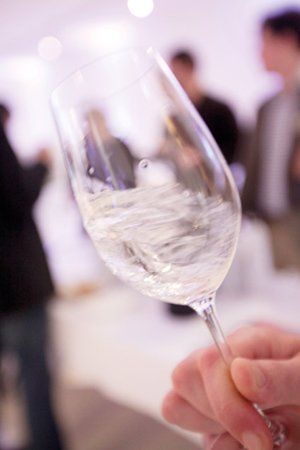New World: Sauvignon Blanc
The move towards cooler-climate and less vegetal styles was welcomed. The tendency to charge £10 a bottle, less so
With a good number of New Zealand Sauvignons choosing to enter in the Varietal Classic section, Chile made up almost half of the entries here – and despite the continuing shift away from Casablanca and towards Leyda, the former still took two of the country’s three Golds.
At a time when value for money is in short supply, it was heartening to see that all but two of the country’s medals went to wines under £8, with the Errázuriz 1870 Peñuealas and Undurraga Aliwen providing the kind of over-delivery that was conspicuous by its absence for much of this year’s competition. The Undurraga fully deserved its By The Glass award.
Our tasters generally preferred the wines that were grown closer to the cooling influences of the coast, where the acidity was natural rather than added. And while they weren’t averse to a bit of barrel action to add complexity, any
obvious acidification (far more of a factor in the Central Valley offerings) was a complete no-no.
 Our panels were impressed by much of what they tasted from New Zealand, and if you add in the Varietal Classic Savs, the country’s overall medal haul with this benchmark varietal was impressive.
Our panels were impressed by much of what they tasted from New Zealand, and if you add in the Varietal Classic Savs, the country’s overall medal haul with this benchmark varietal was impressive.
The stylistic shift visible in the Varietal Classics pages was, unsurprisingly, on show again here, with a move away from the vast pungent fruit of yore and into something that’s less recognisably Kiwi, but a whole lot easier to match with food.
One or two tasters grumbled that the wines ‘didn’t have the opulence’ they were expecting, and warned of ‘the danger of confusing the customer who is expecting a more pungent style’.
But frankly, after being told for the past 10 years that their wines are too big and fruited to match with much beyond Thai food, it would be hard not to sympathise with the Kiwis if they told the sommeliers to (a) get over themselves, (b) stop looking towards Europe all the time, and (c) do their damn job and explain such differences to the public.
‘Like cheap Pinot Grigio or Rioja, New Zealand Sauvignons have a quasi-brand status, so you’re better off giving customers a better wine and people will pay for it,’ said team leader Peter McCombie MW. ‘Look to other sources for cheap Sauvignon, like Chile or South Africa.’
Certainly, on the evidence of the past few years in the Sommelier Wine Awards, South Africa can produce good examples in a variety of styles. Whether it can do them cheaply, however, is an okapi of a different colour.
‘There were some very good wines here, but we often felt that prices were a little high,’ said Hakkasan Group's Christine Parkinson of a flight that yielded four Silver medal winners, only one of which was under £9. ‘People will only pay so much for South African Sauvignon.’
In fact, the same is true in general of this grape variety.
‘Price is a serious consideration with New World Sauvignon,’ said STK’s Michael Harrison. ‘Above a certain level, the wine really has to offer something special. £30-£40 is the limit that people are prepared to pay on most lists.’ Worth bearing in mind, Mr Grower-man, next time you think of slapping a £12 price tag on your gooseberry juice.
‘We aren’t looking for the grassy style any more. I prefer tropical fruit, a soft palate and integrated acidity.’
Tobias Brauweiler, The Ritz
‘There were some surprisingly good quality wines in the New Zealand flight. These wines are more exciting for sommeliers – and good value, especially at the cheaper end.’
Gergely Barsi Szabó, Bread Street Kitchen